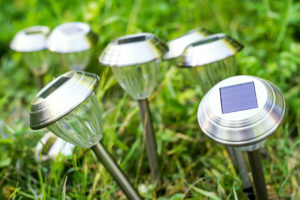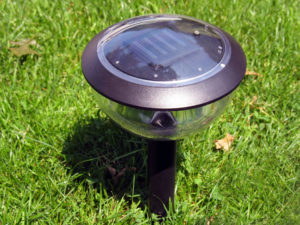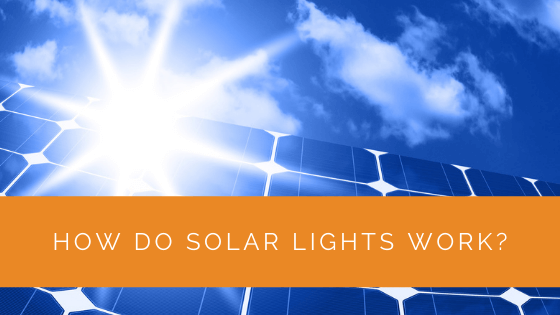Solar lights are highly efficient, function completely off-grid and incorporate battery technology. But how do they actually work?
Like us, if you are nature-conscious, you might want to demystify the mechanism behind a solar light. Be it solar lights for posts or Christmas — all of them adopt the same mechanism.
It’s fantastic how solar lights do a great job without the hassle of wiring. Luckily, understanding how solar lights work is not complicated. Solar technology has been here for a while now, and we have lots of research in place to answer your questions!
Read on to find out how solar lights work.
Contents
- 1 Key Takeaways
- 2 What Are Solar Lights?
- 3 What Are the Different Components in Solar Lights?
- 4 How Do Solar Lights Work?
- 5 What is the Mechanism Behind Solar Lights?
- 6 Can Solar Lights Work Without Sunlight?
- 7 Expert Insights From Our Solar Panel Installers About How Solar Lights Work
- 8 Our Expertise in Solar Lights
- 9 Summary
Key Takeaways
- Solar lights work by harnessing energy from the sun using photovoltaic solar panels and storing it in rechargeable batteries for later use.
- They rely on the photovoltaic principle, where sunlight activates electrons in the solar cells to generate electrical energy.
- Solar lights can function without direct sunlight, as they can be charged using indoor lighting or LED lights, and some models come with USB charging options.
What Are Solar Lights?
In basic terms, solar lights are portable lights and include LED lamps, rechargeable batteries, and photovoltaic solar panels. They harness the sun’s energy to produce electricity.
You can use these solar lights both indoors and outdoors. Also, solar lights are affordable long-term alternatives to traditional lights as they do not use energy from the grid.
You can install solar lights in different places — both private and public. These days, you might even come across traffic and sign lights using solar energy. That’s not it. These solar lights are making a buzz in public events too!
What Are the Different Components in Solar Lights?
Before we move on to the actual process of how solar lights work, let’s understand more about their structure. Unlike traditional lights, solar lights have extra components that help them produce renewable energy.
Typically, you’ll spot an electronic light fixture, battery, and solar photovoltaic panel with solar lights. The different components work in tandem to absorb, convert, and store solar energy.
The battery is an indispensable part of the structure. It allows you to use solar lights even in the absence of sunlight. The battery can have varying capacities based on the different solar panel sizes.
Also, the use of LEDs drastically reduces the capacity requirements of batteries and solar panels. Some solar lights also include photoreceptors to offer automatic powering features.

How Do Solar Lights Work?
Solar lights work on the photovoltaic principle effect. The panels harness energy using photovoltaic solar cells. Furthermore, they convert this AC into DC, similar to what comes from the grid.
Solar panels save the converted energy in batteries for later use. A single solar cell can produce up to 0.45 volts.
The power generated by solar panels depends on aspects such as the availability of sunlight. Solar cells play an essential part in this process by converting sunlight into electrical energy.
The many crystalline layers and chemicals in a solar cell create positively charged spaces and negatively charged electrons.
During the day, the solar panels work to absorb and convert energy from the sunlight. Also, many solar lights have photoreceptive sensors that automatically illuminate when it is dark. The solar lights repeat this cyclic process every day.
You’ll find a variety of solar lights in the market. But, regardless of their design and structure, they have the same working process.
What is the Mechanism Behind Solar Lights?
Your solar lights consist of an array of multiple solar cells formed by wiring several panels together.
Solar cells generally use polycrystalline silicon as their primary material. Polycrystalline silicon is a semiconductor that can produce positively charged spaces and negatively charged electrons.
When the sunlight strikes these cells, the photons discharged from the sun activate the electrons and force them into the positive spaces. The panels generate direct current when electrons flow through the circuit.
Manufacturers directly wire the panels to the battery using a charge controller that protects the battery from current backflow. The solar panels stop the collection, conversion, and storage process at nighttime.
When the photoreceptors sense the absence of sunlight for the conversion process, they automatically start supplying power to the LEDs. These receptors also automatically turn off at daybreak.
Solar lights perform by repeating the same steps every day. The two most common types of solar lights are solar street lights and solar garden lights.

Can Solar Lights Work Without Sunlight?
It is natural to be curious about whether or not these cost-effective lights will work without sunshine. The good news is that there are definitive ways to charge your solar lights even without direct sunlight.
You can charge the solar lights indoors using incandescent light bulbs. The PV cells effectively respond to incandescent lamps and charge themselves. However, you need to ensure that the source lights are bright enough for this method.
On the other hand, LED lights might be more effective as sources of energy for solar lights. Like the sunlight, the LED lights produce wavelengths in the ranges of visible light, ultraviolet rays, and infrared waves.
You can also look for solar lights that come with USB charging outlets. This option will allow you to charge and operate lights even in the absence of sunlight.
Expert Insights From Our Solar Panel Installers About How Solar Lights Work
Solar lights work by converting sunlight into electricity using photovoltaic cells. This energy is stored in rechargeable batteries and used to power the lights at night.
Senior Solar Technician
The efficiency of solar lights largely depends on the quality of the solar panels and the capacity of the batteries. Ensuring they are positioned to receive maximum sunlight is key to their performance.
Lead Solar Installer
Understanding the basic mechanism behind solar lights can help you maintain them better and troubleshoot common issues, ensuring they provide consistent illumination for years.
Solar Installation Specialist
Our Expertise in Solar Lights
At Solar Panels Network USA, we’re here to provide you with valuable information and support regarding solar lighting. With our experience and understanding of the solar lighting industry, our team of experts is prepared to assist you in finding the right lighting solution for your needs. Whether you’re interested in improving your outdoor spaces, conserving energy, or adopting a more sustainable approach, we’re well-equipped to help. Please feel free to contact us with any questions or inquiries.
Summary
Unlike non-renewable energy sources such as fossil fuels, solar lights depend on solar energy. Regardless of their application, all solar lights follow the same mechanism. However, the material and process might differ from product to product.
Solar lights repeat a cyclic process every day to offer an uninterrupted power supply.
Now that you know how solar lights work, do you think your home is ready for one? We hope this article was able to answer all your questions about the working of solar lights.
About the Author
Solar Panels Network USA stands at the forefront of solar energy solutions, driven by a team of seasoned solar engineers and energy consultants. With over decades of experience in delivering high-quality solar installations and maintenance, we are committed to promoting sustainable energy through customer-centric, tailored solutions. Our articles reflect this commitment, crafted collaboratively by experts to provide accurate, up-to-date insights into solar technology, ensuring our readers are well-informed and empowered in their solar energy decisions.

